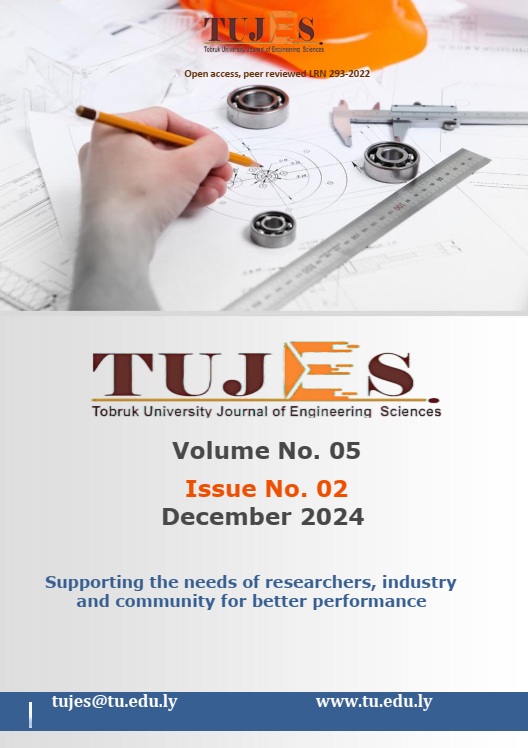Comparative Numerical Simulation of Laminar Flow Using FVM and Commercial Software
DOI:
https://doi.org/10.64516/12g2t440Keywords:
laminar flow, pipe flow, finite volume methodAbstract
In this paper, the flow behaviour in a pipe with sudden contraction is studied numerically using the finite volume method. A general code with automatic mesh generation is created and validated compared to numerical and experimental results. The effects of the geometry dimensions and Reynolds number on the flow are evaluated for laminar flow modes. Numerical predictions of the flow employing a finite volume computer code were also undertaken. This code was carefully checked and optimized to yield reliable predictions for pipe flows with a sudden contraction in cross-sectional area. Computational results are presented and compared with the available experimental results. The stability of the solution is controlled by the use of the equal order element for the velocity and the pressure. The results are found to be very sensitive to the stabilization parameters. The current results are closer to the experimental results than other numerical results in the references. This investigation is carried out to gain insight into the flow structure near the sudden contraction and understand the increased pressure losses generated in this region.
References
[1]. Patankar, S.V. “Numerical heat transfer and fluid flow”. Hemisphere Publishing Corporation, 1980.
[2]. H. K. Versteeg and W. Malalasekera. “An introduction to computational fluid dynamics the finite volume method”. Longman Group Ltd 1995.
[3]. Durst, F. and Loy, T. 1985. “Investigations of Laminar Flow in a Pipe with Sudden Contraction of Cross-Sectional Area”. Compute. Fluids, Vol. 13, No. 1, pp. 15-36.
[4]. Mounir Ibrahim and Waqar Hashim .1992 “Heat Transfer in Oscillating Flows with Sudden Change in Cross Section”. Prepared for the 27th Intersociety Energy Conversion Engineering Conference , San Diego, California, August (3-7, 1992). J. Aerosol Sci., Vol. 26, No. 4. pp. 563-574, 1995
[5]. Chen and David. 1993 “numerical and experimental studies of particle deposition in a tube with a conical contraction-laminar flow regime” Particle Technology Laboratory, Mechanical Engineering Department, University of Minnesota.
[6]. Fossa and Gugliemini, “Dynamic void fraction measurements in horizontal ducts with sudden area contraction”, International Journal of Heat and Mass Transfer 30 "0887# 2796_2704.
[7]. Oliveira et al.2003. “On the effect of contraction ratio in viscoelastic flow through abrupt contractions”, J. Non-Newtonian Fluid Mech. 122 (2004) 117–130.
[8]. Afonso and Pinho,2006, “Numerical investigation of the velocity overshoots in the flow of viscoelastic fluids inside a smooth contraction”, J. Non-Newtonian Fluid Mech. 139 (2006) 1– 20.
[9]. Rogério and José,” Laminar Elliptic Flow in the Entrance Region of Tubes”, J. of the Braz. Soc. of Mech. Sci. & Eng. July-September 2007, Vol. XXIX, No. 3 / 239
[10]. John D. Anderson, Jr. “Computational Fluid Dynamics The Basics with Applications”. McGraw-Hill, 1995.
[11]. Jayathi Y. Murthy, “Numerical Methods in Heat, Mass, and Momentum Transfer”, 1998 J.Y. Murthy and S.R. Mathur.
[12]. D.A. Caughey and M.M. Hafez “Frontiers of Computational Fluid Dynamics”. World Scientific Publishing Co. Re. Ltd 2006.
[13]. Anil W. Date.“Introduction to Computational Fluid Dynamics”. Cambridge University Press 2005 .
[14]. Randall J. Leveque. “Finite Volume Methods for Hyperbolic Problems”. Cambridge University Press 2004 .
[15]. T. J. Chung. “Computational fluid dynamics” . Cambridge University Press 2002 .
[16]. T. shao and F. Laurendeau “Computational Fluid Dynamics for Engineers”. Horizons Publishing Inc., Long Beach, California 2005.
[17]. Ronghua Li and Wei Wu. “Generalized difference methods for differential equations”. Marcel Dekker, Inc. 2ooo.
[18]. Jayathi Y. Murthy. “Numerical Methods in Heat, Mass, and Momentum Transfer”. Purdue University 2002.
[19]. Adrian Bejan, Allan D. Kraus, "Heat Transfer Handbook", John Wiley & Sons, Inc, 2003.
[20]. J.P.Holman, "Heat Transfer", McGRAW-Hill, 8th Edition, 1997.
[21]. Joel H.Ferziger, Milovan Peric, "Computational Methods for Fluid Dynamics", Springer – Verlag Berlin Heidelberg New York, Third edition, 2002.
Downloads
Published
Issue
Section
License
Copyright (c) 2024 Journal of Engineering Sciences

This work is licensed under a Creative Commons Attribution 4.0 International License.













